Top 11 Genially Alternatives & Competitors in 2024
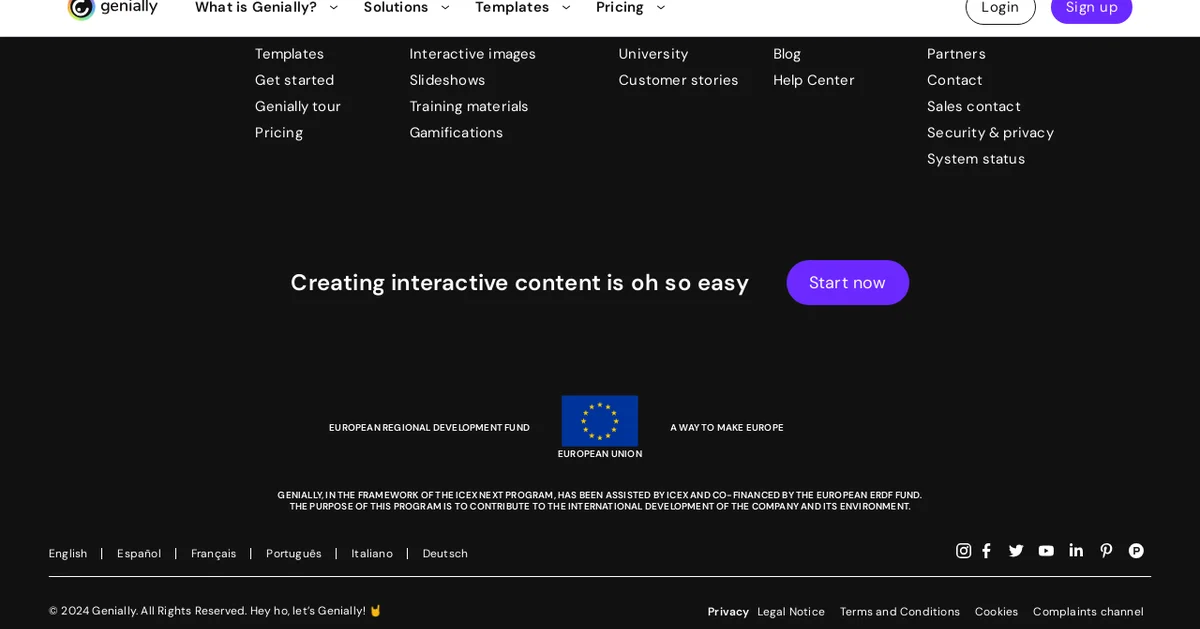
Genially is changing how people approach content creation with its user-friendly platform for building interactive experiences. Whether it’s a presentation, educational module, or marketing tool, Genially allows users to change standard content into engaging material. The platform’s simplicity means you don’t need coding skills to bring your ideas to life. With a library of templates and interactive features, anyone can create captivating materials that attract attention and encourage participation.
With over 30 million users in more than 190 countries, Genially is a major player in interactive content creation. The platform fosters both engagement and learning through gamification. Quizzes, puzzles, and interactive visuals help maintain interest and convey information clearly. As organizations recognize the importance of interaction in sharing ideas, Genially stands out for making learning enjoyable while delivering measurable results.
While Genially is a great product, it’s always good to shop around and look for alternatives. This article identifies some top competitors and their pros and cons.
Canva
Canva is an online design platform that simplifies the creation of visuals for personal and professional needs. Founded in 2012, Canva’s mission has been to make design accessible to everyone. Whether you are a small business owner or a social media manager, Canva enables users to create high-quality graphics easily.
A standout feature is its drag-and-drop interface, which encourages creativity without the steep learning curve typical of design software. Users can choose from many templates, making it quick to craft everything from social media posts to presentations. Canva also has a large library of images, icons, and fonts, which can improve any design project.
Collaboration is another strong point for Canva. Teams can work together smoothly, providing feedback and making edits in real-time, which is vital for businesses that rely on teamwork. This positions Canva as an effective tool for marketing teams, educational institutions, and organizations needing to produce cohesive designs quickly.
Canva’s affordability also makes it a good choice. They offer a free version with many features, while the Pro plan unlocks additional resources for users who need more design options. This flexibility can attract growing businesses that need to adapt their designs as they evolve.
If you are looking for a user-friendly design tool that combines extensive resources with team collaboration, Canva may suit your needs.
Pros
- Intuitive drag-and-drop interface
- Large library of templates and design elements
- Strong collaboration features for teams
- Affordable subscription plans
Cons
- Limited customization options compared to advanced software
- Some advanced features require a paid plan
Prezi
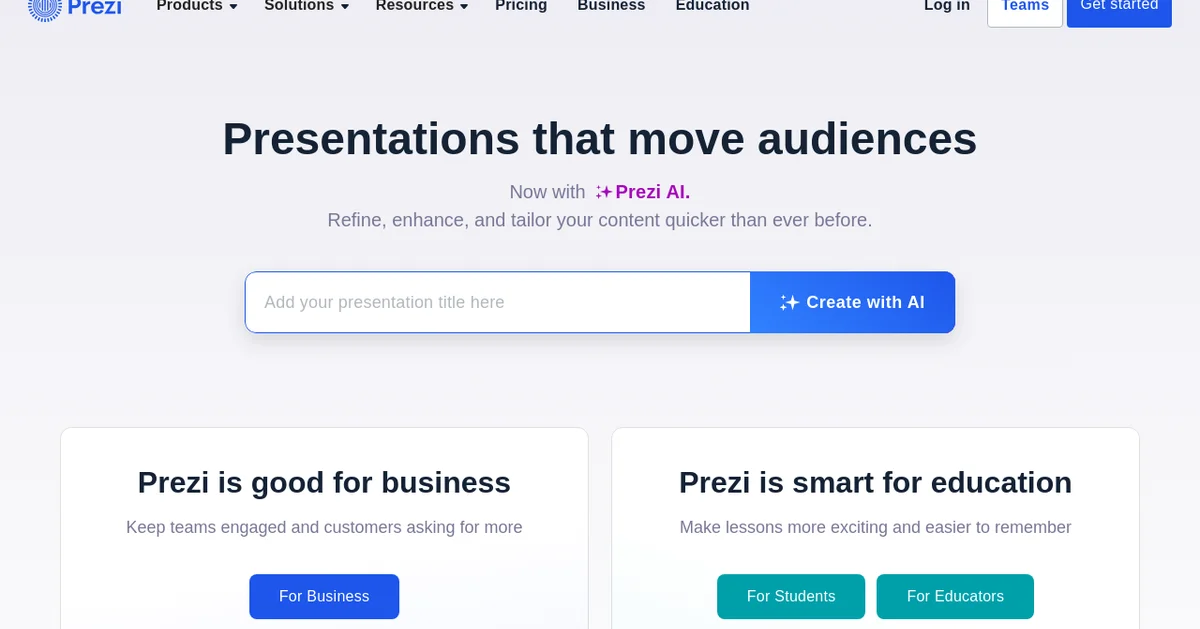
Prezi is changing how people create presentations. As a dynamic alternative to platforms like Genial.ly, Prezi offers a mix of creativity and functionality. Since 2009, it has become a popular tool for millions, including students and professionals, to craft engaging presentations that connect with audiences.
One of Prezi’s notable features is its open canvas design. Unlike traditional slide-based presentations, Prezi allows users to design in a non-linear way. This approach encourages creative storytelling, letting ideas flow and connect naturally. Prezi also provides a large library of ready-made templates and assets. Users can select from professionally designed templates or access millions of images, GIFs, and icons, simplifying the creative process and saving time.
Prezi AI is a valuable addition. This feature helps users refine their content quickly, acting as a supportive partner in the creative process. Businesses can use this to increase team engagement, and educators can make lessons more memorable for students. The ability to present both in-person and online—with features that keep audiences interested—further distinguishes Prezi.
Over the years, Prezi has built a reputation for improving visual storytelling across various sectors, gaining positive feedback, including recognition as a G2 leader.
Pros
- Open canvas for non-linear presentations
- Extensive library of templates and assets
- Prezi AI for quick content enhancement
- Strong reputation and customer satisfaction
Cons
- Learning curve for new users
- May require internet access for certain features
- Some templates may feel less customizable
Visme
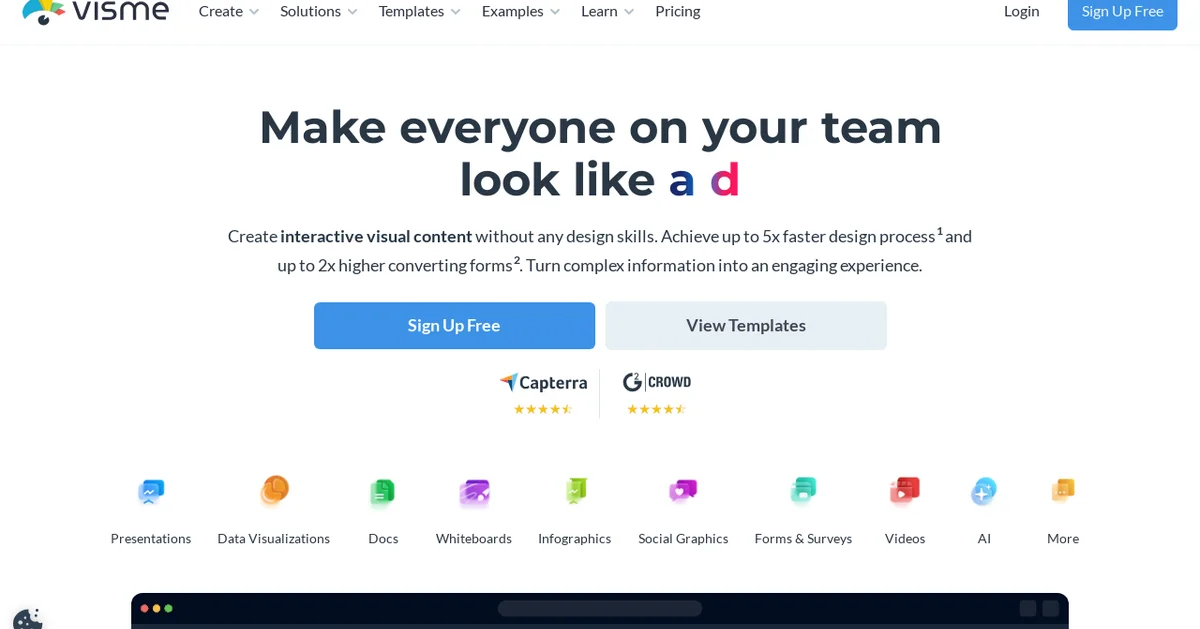
Visme serves as a platform for creating interactive visual content that anyone can use, even without design experience. It’s designed for teams seeking to simplify their design workflows while delivering compelling visuals. The platform addresses various content needs—like presentations, infographics, social media graphics, and data visualizations—allowing users to manage different projects in one place.
A notable feature of Visme is its AI Designer, which turns text prompts into ready-made designs quickly. This boosts productivity, letting teams concentrate on their message instead of getting caught up in design details. With thousands of customizable templates and high-quality photos, icons, and graphics, Visme enables the creation of distinct visuals suited to specific brand images.
Visme is effective at changing complex data into engaging visuals, improving understanding and retention—qualities valued in corporate environments. Collaboration tools allow team members to work together smoothly, reducing the back-and-forth typical in project development. Visme’s Brand Wizard helps users keep brand consistency by entering company logos, colors, and fonts easily.
For businesses seeking a straightforward alternative to alt_11, Visme offers strong functionality aimed at improving communication through visual storytelling.
Pros
- Easy-to-use design process with AI support
- Extensive range of customizable templates
- Strong collaboration features for teams
- Excellent data visualization tools
- Comprehensive platform for various content types
Cons
- Learning curve for advanced features
- Some users may prefer more specific focus areas
- May not have the same depth of interaction mode compared to alt_11
ThingLink
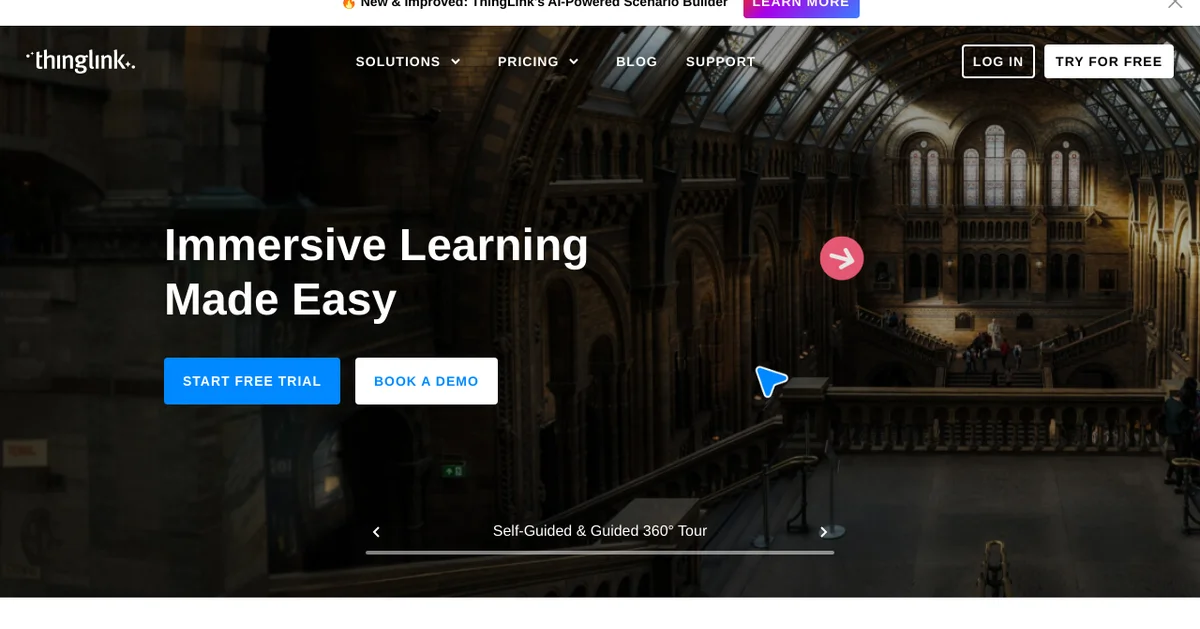
ThingLink serves as an alternative to Genial.ly in the interactive content creation field. Founded to make engaging learning accessible, ThingLink offers a platform where users can create interactive media experiences. Users can add tags to images, videos, or 360° models, enabling creativity and allowing quick onboarding.
A key feature of ThingLink is its AI-Powered Scenario Builder, which helps users create immersive learning experiences. This tool supports various formats, making it appealing for businesses wanting to improve training programs or educational institutions looking to engage students. Unlike Genial.ly, ThingLink focuses on immersive media across multiple devices and learning management systems (LMS), offering flexibility and scalability for organizations.
The platform has established itself in various sectors, including corporate training, marketing, and education. Companies like Coca-Cola and universities use ThingLink to create engaging stories about their products and services, improving interaction through virtual tours and simulations. The ability to gather data on user engagement and learner performance adds value for businesses aiming to assess their content’s effectiveness.
Additionally, ThingLink supports a community of over 10 million creators. This network shares best practices and inspires innovative ways to use interactive content, solidifying ThingLink’s presence in different industries worldwide.
Pros
- Easy to use
- Supports multiple content types (videos, 360°, AR/VR)
- Scalable for large applications
- Strong data tracking and feedback options
- Community of content creators for support and inspiration
Cons
- Learning curve for advanced features
- May lack some design options found in competitors
- Pricing could be a concern for smaller users or teams
Adobe Spark
Adobe Spark is part of the Adobe Creative Cloud family and simplifies the creative process for individuals and businesses. It allows users to create graphics, videos, and web pages easily. Its seamless integration with other Adobe tools makes Spark feel like a natural extension for those familiar with Adobe.
A key feature of Adobe Spark is its library of templates. Users can start their projects with designs tailored for social media, presentations, and more. The intuitive drag-and-drop interface enables anyone, regardless of design experience, to produce attractive content. Users can also add their branding elements to maintain consistency, which is important for businesses.
Adobe Spark’s emphasis on storytelling is another advantage. The platform encourages users to create engaging narratives, making it suitable for marketing campaigns or educational content. This storytelling aspect is especially appealing for brands that want to connect with their audience.
The platform’s collaboration features improve its appeal. Team members can work together on projects in real time, fostering creativity and helping meet deadlines. This makes Adobe Spark useful for teams looking to improve their workflow.
Adobe Spark is a user-friendly tool for those who want to create memorable content quickly. Its integration with the Adobe suite, template library, focus on storytelling, and collaboration options contribute to its strength in interactive content creation.
Pros
- User-friendly interface
- Integration with Adobe tools
- Extensive template library
- Strong storytelling support
- Real-time collaboration features
Cons
- Requires an Adobe account
- May be overwhelming for complete beginners
- Less focused on interactive elements compared to alternatives
Piktochart
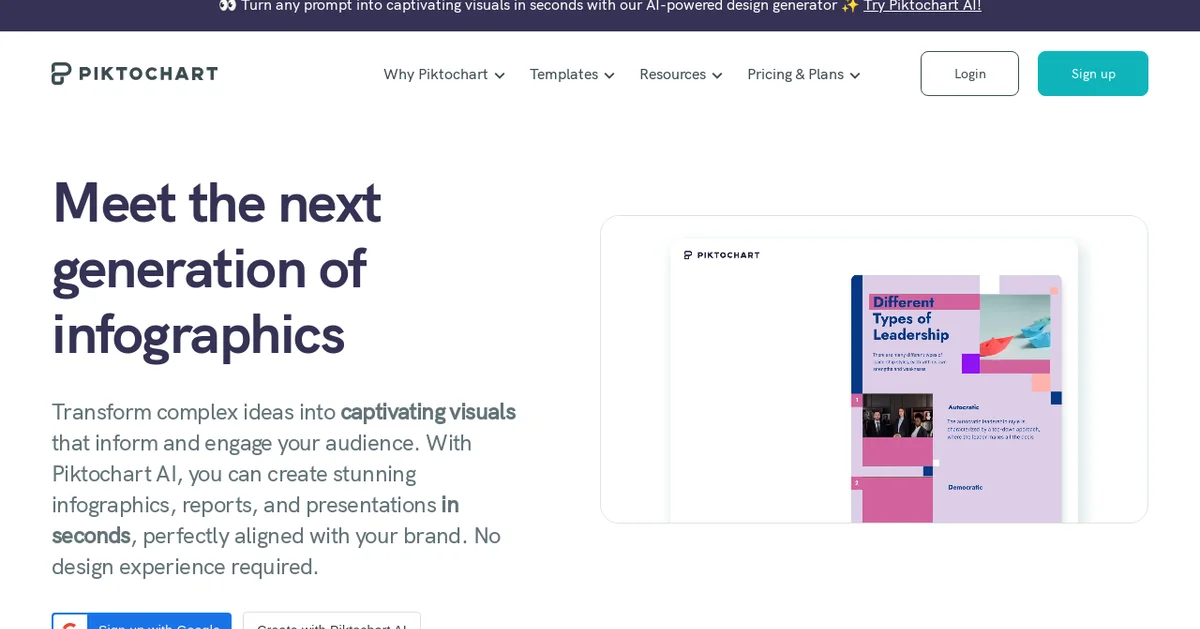
Piktochart offers a user-friendly platform that stands out in interactive content creation. It turns complex ideas into engaging visuals like infographics, reports, and presentations. Designed for those without design experience, Piktochart helps users create appealing graphics quickly. This makes it a strong alternative to Genially for businesses looking to improve their visual communication.
One unique feature is its AI-powered design generator. Users can enter a simple prompt, and the AI produces relevant visuals in seconds. This removes the typical hassle of design work and allows teams to focus on content rather than appearance. Piktochart also provides templates for various formats—such as posters, flyers, or social media graphics—helping businesses maintain a consistent brand image across platforms.
Another advantage is its collaborative workspace, enabling teams to work together in real-time. Users can comment, make revisions, and access shared assets without the usual back-and-forth often seen in traditional design processes. This makes Piktochart appealing for businesses looking to streamline their marketing efforts.
Piktochart features a large library of charts, diagrams, and icons, making it easy for users to select and customize elements that fit their needs. Tools like the Map Maker and Flowchart Maker help users clearly depict complex data.
Piktochart provides an efficient way to create diverse visual content while keeping brand consistency in mind. The platform’s ease of use and collaborative features enable teams to work faster and more cohesively than many alternatives.
Pros
- AI-generated visuals in seconds
- No design experience needed
- Extensive templates and design elements
- Streamlined team collaboration
Cons
- Some users may find the AI visuals less customizable
- Limited advanced design features for expert users
Emaze
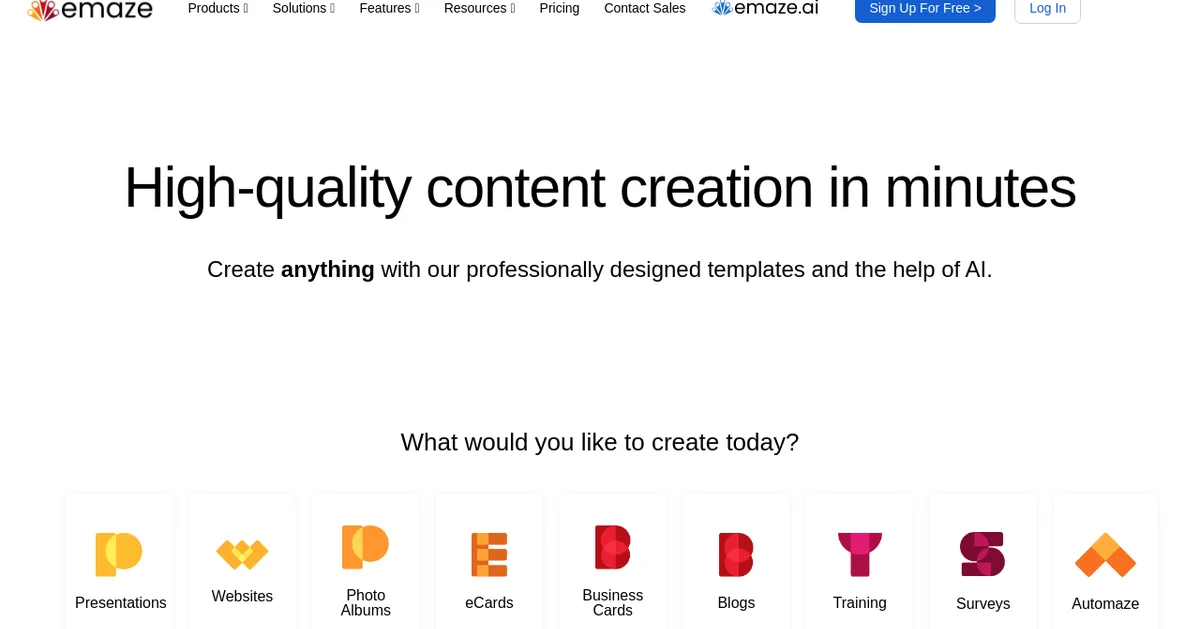
Emaze is a platform for creating interactive content, providing a strong alternative to genial.ly. Focused on simplicity and efficiency, Emaze gives users the tools to craft presentations, websites, photo albums, eCards, and more without needing advanced technical skills. The platform stands out with its range of designed templates that make content creation easier.
Emaze was created to make quality content accessible. The founders saw the challenges many face when creating engaging presentations or websites. This led to features like Automaze, where AI helps generate customized content quickly. This tool is useful for businesses and educators, allowing them to focus more on strategy and less on design.
Emaze offers flexibility across various sectors. Whether in education, real estate, or business, the platform provides tailored solutions. For example, educators can create effective digital learning materials, while marketers can design eye-catching digital business cards that improve their networking. Plus, the collaborative features enable teams to work together effectively, boosting creativity and communication.
Another appealing aspect of Emaze is its focus on user engagement. Instead of offering just static solutions, it encourages users to share and connect, highlighting how their creations can impact audiences.
Pros
- User-friendly with no coding required
- AI-powered content generation speeds up the creation process
- Wide range of designed templates for various content types
- Collaborative features improve teamwork
- Industry-specific tools streamline workflows
Cons
- Some advanced features may require a learning curve
- Limited customization options compared to more complex tools
- Potential costs associated with premium features
Venngage
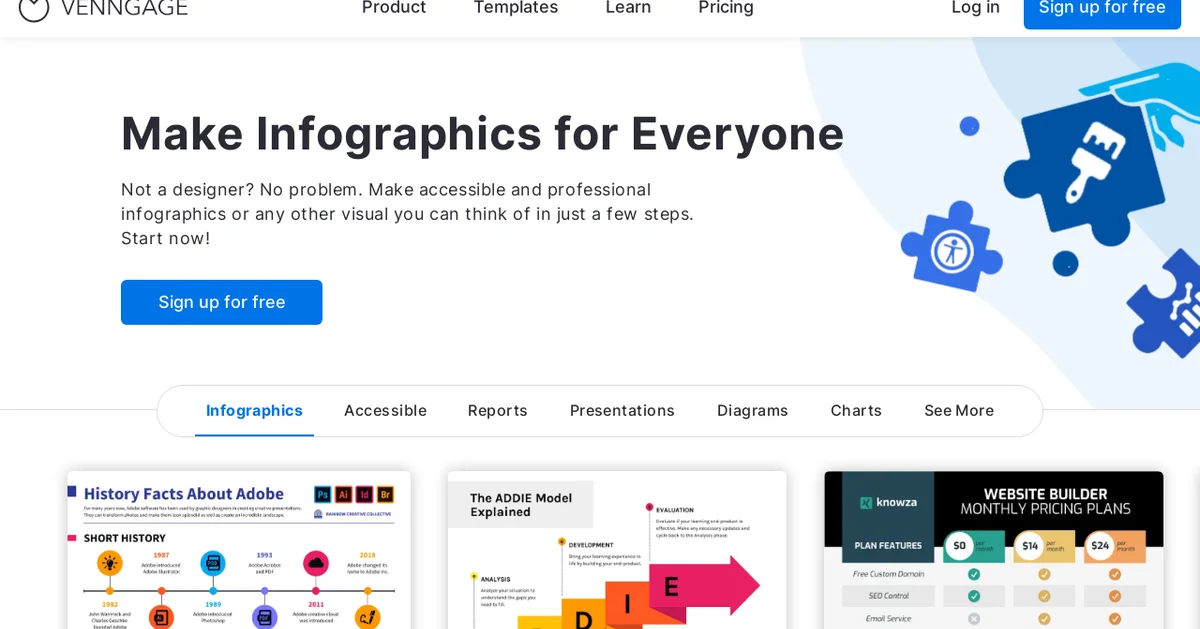
Venngage is a tool for creating interactive content, especially infographics. Founded on the idea that anyone can make great visuals without advanced design skills, Venngage offers an easy-to-use platform for everyone. Marketers, teachers, and business professionals can change dull data into engaging infographics with ease.
One of Venngage’s standout features is its large library of professional templates, which are updated regularly. This provides users with a rich starting point, enabling creativity without the pressure of design work. Their AI-powered features allow users to create infographics from prompts or data while suggesting text improvements. Enter a few stats, and within moments, you have a polished infographic ready to share.
The focus on accessibility is also important. Venngage’s templates meet WCAG and ADA standards, ensuring that all users can create visually appealing and inclusive content. You can download your work in formats like PDF and PPTX, making it easy to fit into your existing workflows.
Many organizations have reported better engagement metrics after switching to Venngage. Users indicate higher audience retention and increased interaction due to the visually appealing content they can create.
Pros
- Easy-to-use interface for all skill levels
- Extensive templates and AI features for straightforward content creation
- Accessibility compliance for a wider audience
- Flexible download options for various uses
- Positive user feedback and proven engagement results
Cons
- Limited free features compared to some competitors
- Some templates may appear too similar to each other
Ceros
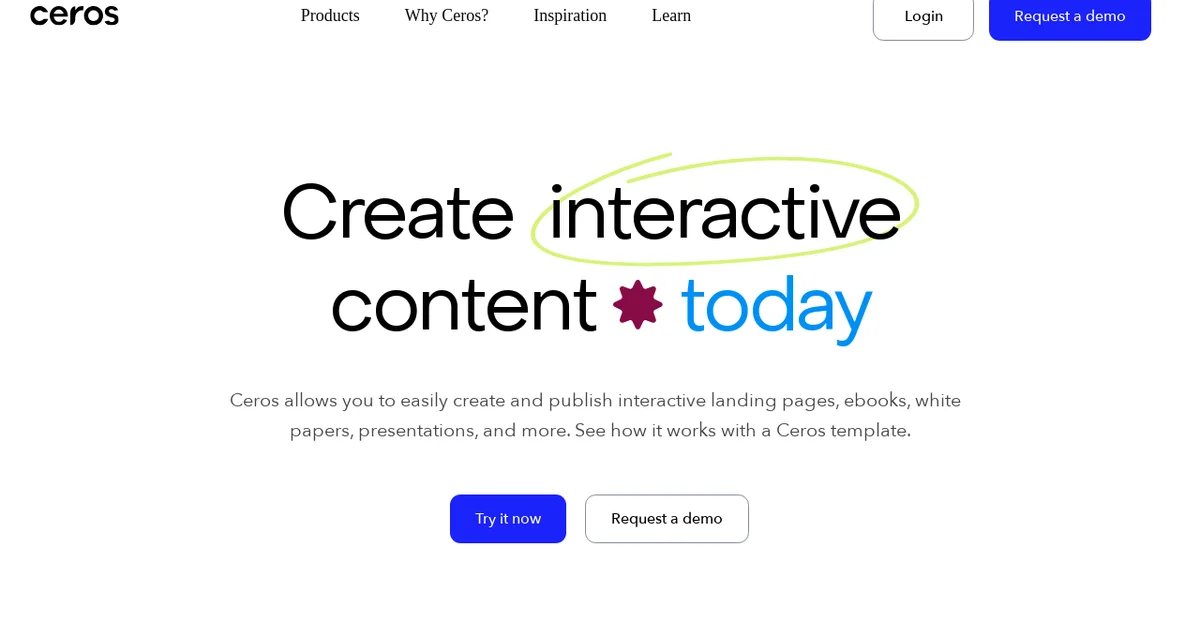
Ceros is a strong alternative to platforms like Genial.ly in the interactive content creation space. It aims to change static marketing materials into dynamic experiences, allowing businesses to create engaging landing pages, ebooks, presentations, and more—without needing a coding background. This no-code feature makes Ceros accessible for teams with limited design resources.
The platform’s Studio lets creators build content from scratch or modify templates, saving time and streamlining collaboration. With real-time updates, teams can work together efficiently, ensuring everyone is aligned and that the final output meets standards. This collaborative aspect can be crucial for companies aiming to boost productivity while maintaining quality.
Performance tracking is another key element. Ceros enables users to monitor engagement, traffic, and other metrics to refine their content strategy. Understanding audience interaction with materials drives better decision-making and improves effectiveness. This focus on data sets Ceros apart from platforms like Genial.ly, which may not provide as detailed analytics.
Ceros also highlights the importance of creativity in digital marketing. By allowing users to create impactful content quickly and effectively, it helps brands stand out and capture audience attention. The range of content types—spanning pitch decks to resource hubs—means there’s something for nearly every business need.
Pros
- No-code platform for easy content creation
- Real-time collaboration for teams
- Performance tracking for better insights
- Variety of content templates available
Cons
- Learning curve for first-time users
- Limited design customization for complex projects
Mentimeter

Mentimeter is a platform that stands out in the interactive content creation space, similar to alt_11. Founded to change presentations into dynamic exchanges, Mentimeter offers an accessible way to engage audiences in various settings, from classrooms to corporate meetings. The platform allows users to create appealing presentations easily, using a variety of templates or starting from scratch. Its design promotes interaction, inviting participants to engage through polls and questions.
One unique feature of Mentimeter is its focus on inclusivity. It enables anonymous participation, making it easier for those who might otherwise remain silent to share their thoughts and questions. This fosters a more dynamic conversation and ensures that all voices are acknowledged. After presentations, users can analyze responses slide-by-slide, gaining insights into audience engagement and understanding.
Mentimeter appeals to educators and business professionals alike. Teachers find it useful for creating an interactive learning environment, while corporate users appreciate its ability to gather feedback quickly during meetings. For larger organizations, the enterprise version offers improved data protection features, including Single Sign-On and centralized user management, ensuring a secure experience for all participants.
Considering alternatives to alt_11, Mentimeter is worth exploring. Its commitment to improving audience interaction through anonymity, strong analytical tools, and an easy setup process distinguishes it in the interactive content landscape.
Pros
- Simple to create presentations
- Anonymous participation encourages engagement
- Slide-by-slide analytics for insights
- Strong focus on education and corporate use
- Secure options for enterprise clients
Cons
- Limited design customization compared to others
- Free version may have feature restrictions
Microsoft Sway
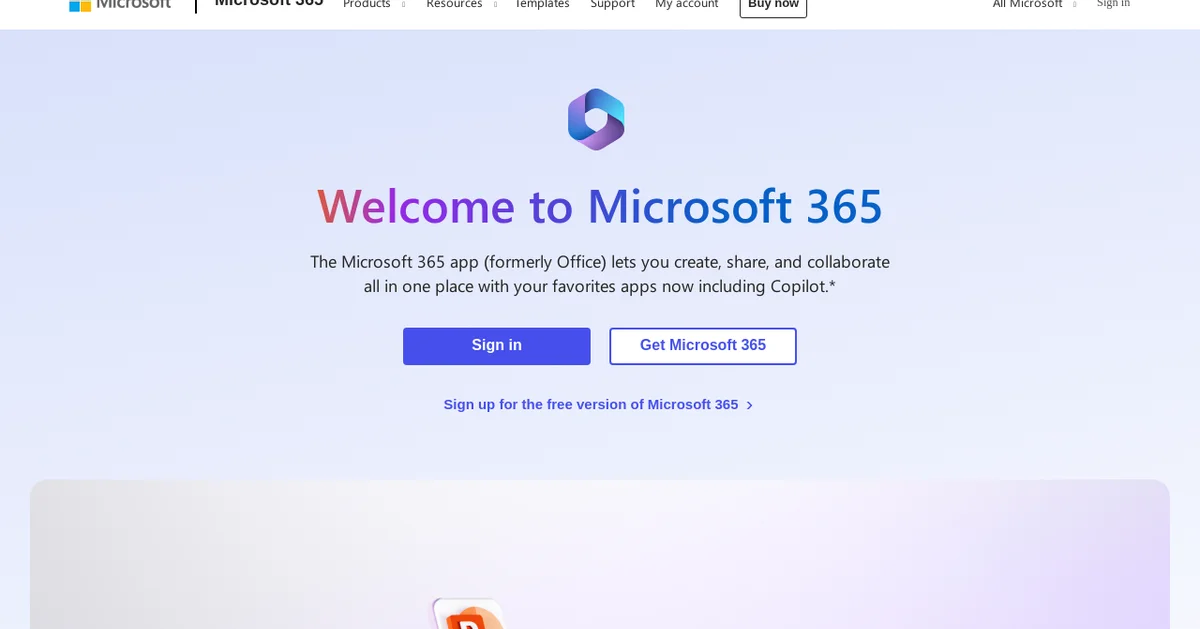
Microsoft Sway is part of the Microsoft 365 suite that allows users to create interactive reports, presentations, and stories. It’s designed for individuals and organizations that want to present information in a visually engaging way without a design background. One of Sway’s key features is its simplicity. Users can drag and drop content like images, videos, or text, and Sway automatically formats it into a cohesive design. This saves time and removes the stress of design choices, making it a good option for those who want to create eye-catching content quickly.
Unlike many traditional presentation tools, Sway is cloud-based, allowing you to access and edit projects from anywhere. This feature enhances collaboration, letting teams work together in real time. Microsoft’s integration with other Microsoft 365 apps adds convenience, enabling users to pull content from programs like OneDrive or Word easily.
Sway also offers a unique storytelling angle with its focus on fluid layouts that adjust based on the device used for viewing. This flexibility makes it a strong choice for organizations that need to communicate effectively across different platforms. The AI features in Microsoft 365 further improve content creation by suggesting design improvements and content options as users build their projects.
Microsoft Sway stands out for its ease of use, strong collaboration features, and seamless integration with other Microsoft tools.
Pros
- User-friendly interface
- Real-time collaboration
- Cloud-based access
- Integration with Microsoft 365 apps
- Auto-formatted visual layouts
Cons
- Limited customization compared to traditional design tools
- Performance may vary based on internet connectivity
- Learning curve for advanced features